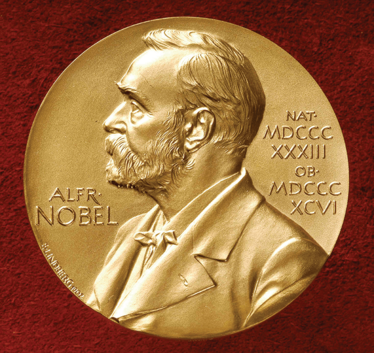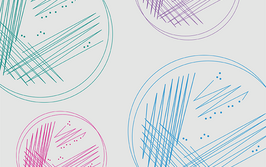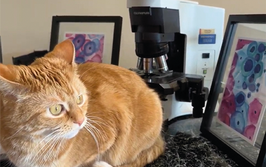Microscopists Given Greatest Honor
Scientists who developed live cell molecular imaging awarded the Nobel Prize
Three microscopists have taken this year’s Nobel Prize in Chemistry for discovering ways to image some of the most basic components of life. It’s an honor that brings welcome publicity to the field of microscopy, generating enthusiasm across the scientific community. It’s also a major step forward in the use of optical microscopes, breaking the Abbe diffraction limit – the absolute boundary of optical resolution – for the first time.

For over a century, microscopists knew that it was impossible to visualize anything smaller than half a wavelength of light, about the size of a large virus or small bacterium. This restriction meant that microorganisms and subcellular structures could never be seen clearly through an optical microscope. But now, Eric Betzig, Stefan Hell and William Moerner have broken through that barrier. Hell, of the Max Planck Institute in Germany, developed a method that uses a laser beam to stimulate molecules to glow, then applies a second beam to cancel out all but a tiny volume of those emissions. American researchers Betzig, of the Howard Hughes Medical Institute, and Moerner, of Stanford University, each separately devised a slightly different technique that stimulates certain molecules to fluoresce; by combining individual images of different types of molecules, researchers can assemble a complete picture of the living cell.
It’s a mark of the significance of these new methods that the Nobel Prize was awarded only a few years after the techniques were discovered. In fact, progress is still underway – Susan Cox, a researcher from King’s College London, says, “We’re still at the start. It’s a little messy, and the technological development is happening as the scientific results are coming in”(1). But despite the novelty of nanometer-scale microscopy, its broad applications and detailed results represent an important development in studying life at the cellular level and beyond.
- D. Clery, “Barrier-breaking microscopy methods that revealed cell’s inner life win Nobel”, ScienceInsider, (2014).

While obtaining degrees in biology from the University of Alberta and biochemistry from Penn State College of Medicine, I worked as a freelance science and medical writer. I was able to hone my skills in research, presentation and scientific writing by assembling grants and journal articles, speaking at international conferences, and consulting on topics ranging from medical education to comic book science. As much as I’ve enjoyed designing new bacteria and plausible superheroes, though, I’m more pleased than ever to be at Texere, using my writing and editing skills to create great content for a professional audience.




















